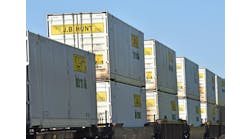Q: A DOT inspector has asked us for a copy of our hazmat packaging "closure instructions." What are they talking about?
A: They are talking about a document that few hazmat shippers have, but that is required under the DOT regulations.
Anyone who provides your company with hazmat packaging such as UN-marked drums or IBCs has to give a written notice of any aspect of the packaging that is incomplete at the time of delivery. This notice also has to describe the types and dimensions of the closures and any procedures to be followed, for both the inner and outer units, to effectively assemble and close the packaging. If the packaging is deemed appropriate for air shipments, the notice has to address the capability of the filled unit to withstand the pressure differential test in 49 CFR 173.27.
Most manufacturers, reconditioners, and other providers of hazmat packaging have such written notices. The problem is where those documents are at your plant. In order to assure proof of delivery of the instructions, many manufacturers simply print them on or attach them to their invoice. Accounts payable people reviewing the invoices, however, are unlikely to recognize that they have been given instructions that must be followed on the filling line.
The DOT inspector is looking at 49 CFR 173.22, shipper's responsibility, particularly paragraph (a)(4), where it says the hazmat filler needs to perform all functions necessary to bring the filled package into compliance with the regulations "as identified by the [packaging] manufacturer or distributor (for example, applying closures consistent with the manufacturer's closure instructions)...." The inspector also may refer to Sec. 173.24(f)(2), requiring closure in accordance with the packaging manufacturer's instructions.
Three types of regulatory liability might come into play: (1) whether you have kept the instructions, (2) whether you have trained your people to follow them and in fact they are following them, and (3) whether you have equipped your people with the tools to carry out those instructions. Helpful guidance on civil penalty exposure, at least from the packaging side of DOT, is provided in Appendix A to 49 CFR Part 107. Here are listed the "frequently cited violations," including failure to follow closure instructions, and the standard penalty amounts. On a relative scale, the closure violation alone is not enormously expensive, but when combined with training violations, record-keeping violations, etc., the total penalty amount may increase. Of course, any one of these violations can be used in a future case to increase penalties by approximately 25%.
Ideally, someone in your company receiving the instructions will know what they are and will forward them to the supervisors of closing operations. To the extent closure is done manually, your hazmat employees' function-specific training ought to include following these instructions. Your audit system should confirm that the instructions are on hand and are being used.
With increasing frequency, manufacturer's instructions include references to tolerances and torque on closures. DOT will look to see whether you have provided the people closing the packages with proper tools such as torque wrenches and, related to this, whether you have a regular program by which you calibrate those wrenches.
While the rationale for wanting people to close their hazmat packages makes sense, the existing regulations do not establish a user-friendly system for compliance. Packaging suppliers have difficulty with these provisions, both in terms of the detail they must provide and proving that they delivered the instructions, and their customers have even greater practical problems following them. It does not appear that this awkward system is going to be adjusted soon, however, so it is better to review your company's program for compliance with it as published in the regulations today.
Lawrence Bierlein is a partner with McCarthy, Sweeney & Harkaway, P.C. in Washington, D.C. His practice is devoted to issues involving transportation of hazardous materials. He can be reached at (202) 775-5560, [email protected]


